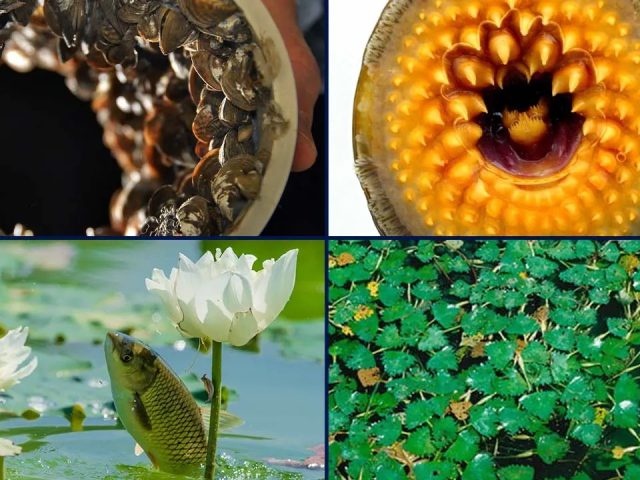Great Lakes Top 10 Most Invasive Species

Researchers released the top ten most invasive species in the Great Lakes in an article in the Journal of Great Lakes Research. There are 188 non-native species inhabiting the Great Lakes, and about half of them cause negative environmental and socioeconomic impacts.
The scientists ranked the aquatic species using an organism impact assessment tool developed by the Great Lakes Aquatic Nonindigenous Species Information System (GLANSIS). Fish, plant, and mussel species were among those causing the most negative effects.
The top ten identified species included:
- zebra mussel (Dreissena polymorpha)
- quagga mussel (Dreissena bugensis)
- alewife (Alosa pseudoharengus)
- sea lamprey (Petromyzon marinus)
- Japanese stiltgrass (Microstegium vimineum)
- grass carp (Ctenopharyngodon idella)
- water chestnut (Trapa natans)
- common reed (Phragmites australis australis)
- round goby (Neogobius melanostomus)
- white perch (Morone americana)
You can read the full Newsweek article to learn more about each of these aquatic invasive species here.
